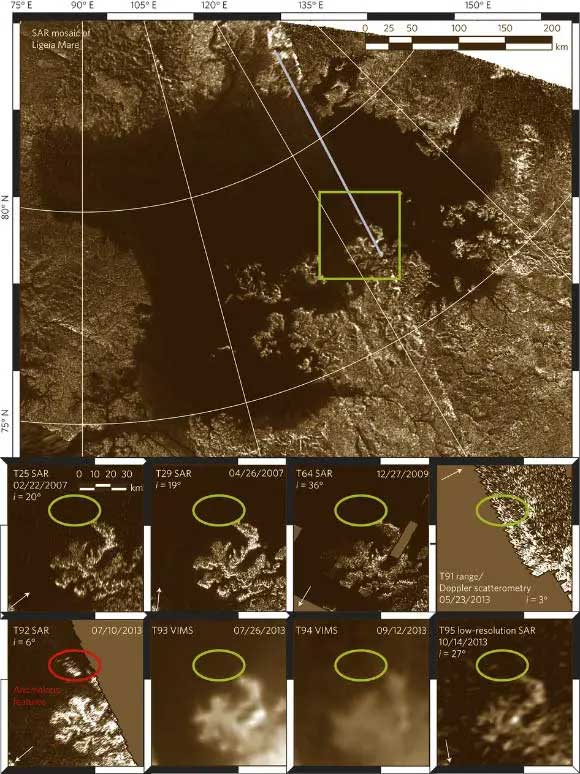Scientists have recently identified “magic islands,” solving a significant mystery about a world that NASA refers to as “Earth’s second.”
This is called a “pseudo-planet” because it is not a planet, but possesses a range of planetary-like characteristics. It is larger than any of the planets in the Solar System and even features a surface landscape with mountains, rivers, and lakes that is strikingly similar to Earth.
In 2014, NASA’s Cassini spacecraft discovered eerie moving bright spots while peering through the clouds.
This world is Titan, the largest “life moon” of Saturn.

The “magic islands” found on the “planet-like moon” Titan – (Photo: NASA).
According to Space.com, a new study led by Associate Professor Xinting Yu from the Department of Physics and Astronomy at the University of Texas at San Antonio has explored the remarkable nature of these “magic islands.”
These are structures situated between lakes of liquid methane and ethane on Titan’s surface, resembling small islands.
They appear island-like like those on Earth, but differ in that they continuously shift, appearing and disappearing in an eerie manner.
Upon their discovery, there were two main schools of thought. The first suggested that they might actually be… ghosts, created by some phenomenon affecting the NASA spacecraft.
This could be waves in the lakes or a series of bubbles linked to some frothy material at the bottom of the lakes, generating signals that disrupted Cassini – argued the “ghost” group.
The second viewpoint posited that these must be real physical entities.
Professor Yu and colleagues assert that they are indeed real, consisting of porous solid organic blocks that are frozen and buoyant, with a texture comparable to Swiss cheese!
They may form whenever “snow” falls from Titan’s sky, a sky that has been shown to be dense with organic molecules that can clump together. This organic “snow” remains saturated, hence it does not dissolve into the lakes of methane or ethane.
Unlike water, the liquid materials forming the lakes on Titan do not create enough surface tension to keep these “magic islands” floating indefinitely. Liquid ethane and methane gradually fill the gaps in the “cheese” structure, causing it to sink.
These processes have been demonstrated through the construction of a comprehensive model based on data from NASA.
It resembles Earth once again, as the process of temporary island formation and disappearance is quite similar to how icebergs break off and drift away on Earth before melting into the ocean.
Titan remains an intriguing target that NASA is “nurturing” in upcoming projects aimed at searching for extraterrestrial life. The space agency has fondly referred to Titan as the “alien Earth,” “Earth’s twin,” “Earth’s second.”
In addition to its Earth-like surface landscape and the countless presence of organic material, Titan may also possess subsurface oceans, which scientists hope could harbor water and life.


















































